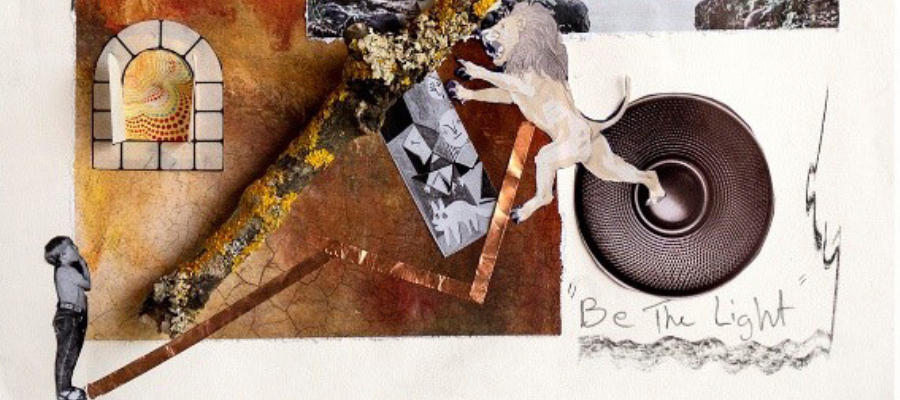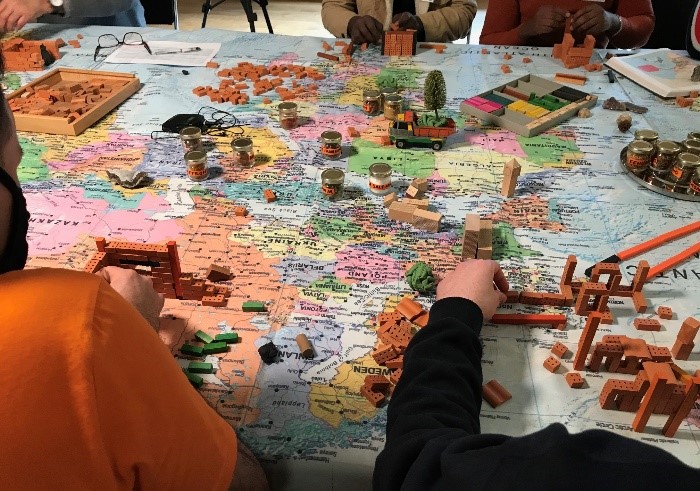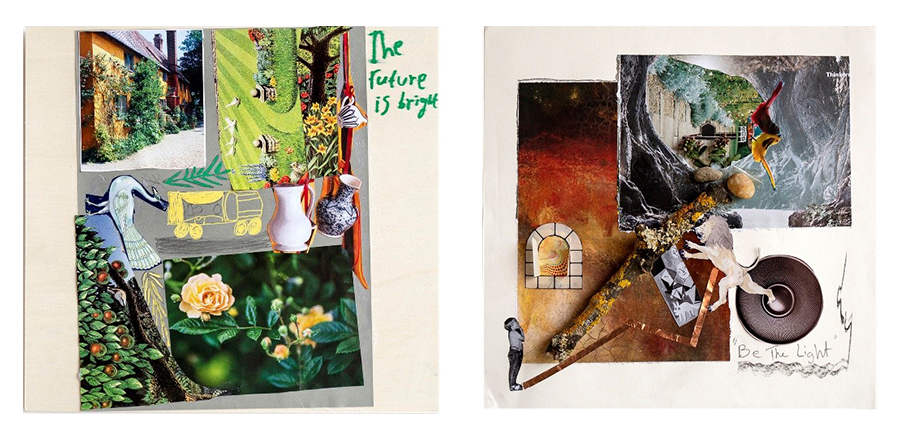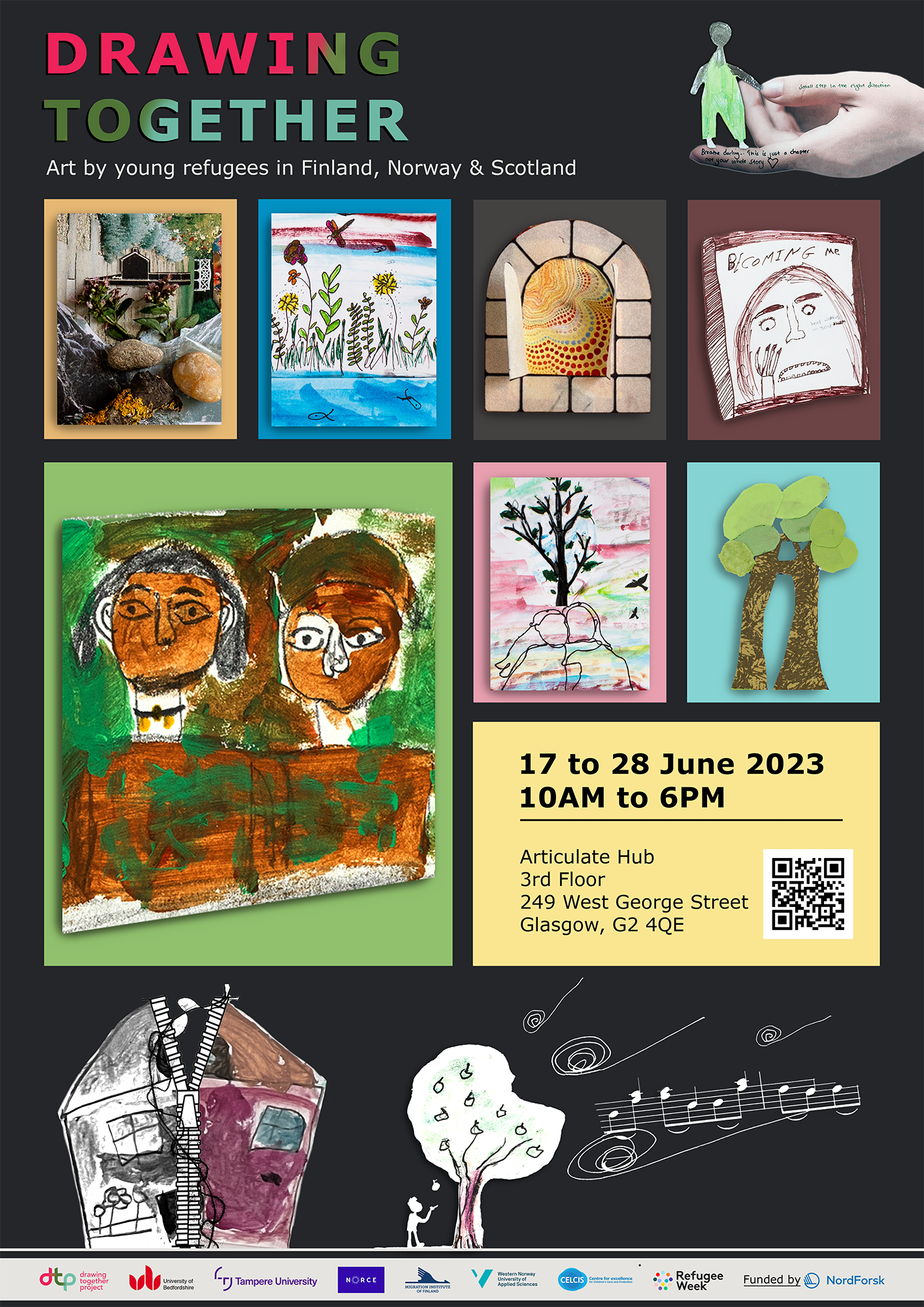The power of participation: understanding the lives of young refugees through creativity

As part of Refugee Week 2022, Paul Sullivan, Sector Engagement Lead at CELCIS, and Professor Ravi Kohli from the University of Bedfordshire, reflect on their work with the Drawing Together project, which focuses on the everyday lives of young refugees in Finland, Norway and Scotland, and discuss some of the key themes that have emerged so far.
The world has been watching as the Ukraine crisis continues to escalate. And, as ever in times of conflict, a refugee crisis follows. It is essential that safety of refugees is fully considered and planned for in any crisis response – especially when, as is the case here, some refugees are unaccompanied children and young people. Of course, refugee crises are not new, and it is important that we learn from the recent and historical experiences of refugees who have already built their lives in Scotland.
One way we are learning from these experiences is through CELCIS providing research expertise to a project called Drawing Together, led by the University of Bedfordshire, working in partnership with three other research centres in Norway and Finland: Tampere University, NORCE and the Migration Institute of Finland, and an associate partnership with Western Norway University of Applied Sciences. The NordForsk-funded project works alongside young refugees in each country to understand what it is that enables them to build full and vibrant lives where they now live. We wanted to take this opportunity to touch upon what we have learned so far and how this could help influence both the refugee policy context in Scotland, as well as enrich public understanding of the lives of young refugees.
Understanding what makes integration work
A core element of the Drawing Together project has been to work with 16 young men and young women in each country who have refugee status – a total of 48 young refugees. We’re doing this over a period of three years to understand the ebb and flow of their lives over that time, using visual art approaches with the young people, alongside research interviews, to find out more about their lives, their social networks, and what is important to them. This helps to avoid a snapshot picture and to emphasise that life is about rhythms and patterns that can only be observed over an extended period. It’s not a photo, it’s a movie.

and identifying their friendships are important to help
young refugees move forward.
An aspect of the work is creating art that will be shown at a exhibitions in Scotland, Finland and Norway in the summer of 2023. This is to show that there is life beyond the spoken word – for young refugees who speak other languages apart from the one in the new country, using arts-based methods such as painting, modelling and music-making can be a good way to demonstrate their talents and hear what is important to them. They use their artwork and talk of hope and talent alongside the stories of suffering that they have had to tell the authorities in each country. These multiple stories matter as they show life in colour, not just in black and white. For each participant, there is a chance to connect their present situation with their childhood and their aspirations for the future. They do this in various ways, telling us about their timelines of wellbeing through talking and drawing maps about important people in their family, their community, their friendship networks, and their professional helpers. Each element shows a different part of the scaffolding that supports their life.

While crises that cause people to seek refuge can be dramatic and sudden, the reality is that integration is a slow process that can be quiet and unassuming, made by communities that live together within borders that seek to preserve and evolve national identities simultaneously. It is crucial to consider what resources, cultures, and behaviours make integration work - both for young people who are refugees and hosts who welcome them.
‘Reciprocity is as important as hospitality’
It feels incredibly challenging to convey the special nature and power of the Drawing Together project through words alone. Instead, please take a journey through some of the photos shown here that capture its vibrancy and colour. This colour, of course, is no accident, as the project integrates components of photography, filmmaking and music – bringing creativity, fun and occasionally a touch of organised chaos!
Any conclusions as such are tentative for now. These will be stronger later in the project’s life. For now, we can say that as a personal experience, integration for young refugees is complex and fragile. Young refugees are intent on putting something back into the country that has accepted them. As a policy framework, integration is built step by step, layer by layer, into a platform that young refugees can use to grow their lives organically. As part of that re-growth, reciprocity is as important as hospitality. Here, accepting their rights and responsibilities as a new citizen is balanced with taking and offering opportunities for their own wellbeing and the wellbeing of others. The promise is that integration is a win-win for all. We couldn’t end our thoughts here better than with a quote from one of our participants walking in a park and reflecting on the laws of natural order that generate integration across ages:
Some of the trees are very old and broken
they lean on other trees and they hold on
for me it’s absolutely amazing,
it’s not just human beings that can help each other,
look at nature, the trees are encouraging, holding each other’s weight
It’s as if they were saying
“Yes, don’t worry, I’m holding you, we’re not finished here”.

Drawing Together held an exhibition in Glasgow in June 2023. Sister exhibitions are being held in Turku, Finland from 8 September to 22 October, and Bergen, Norway from 19 October to 5 November. Visit the Drawing Together website to find out more.
The views expressed in this blog post are those of the author/s and may not represent the views or opinions of CELCIS or our funders.
Commenting on the blog posts Sharing comments and perspectives prompted by the posts on this blog are welcome.
CELCIS operates a moderation process so your comment will not go live straight away.


